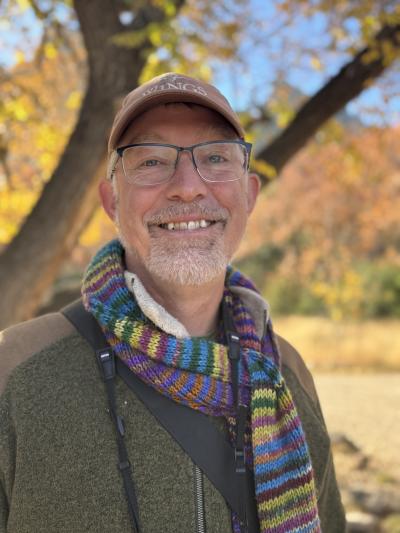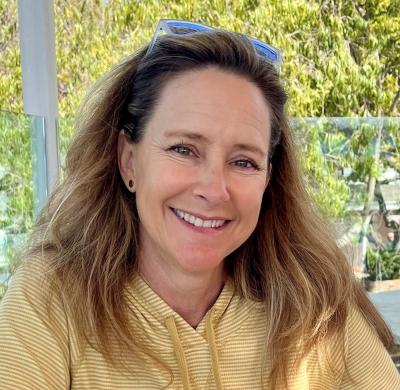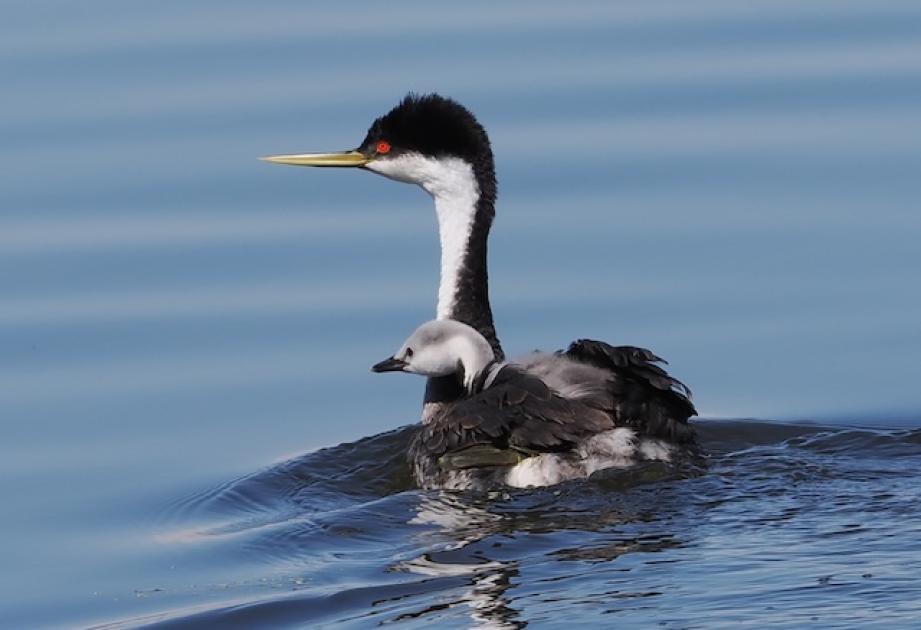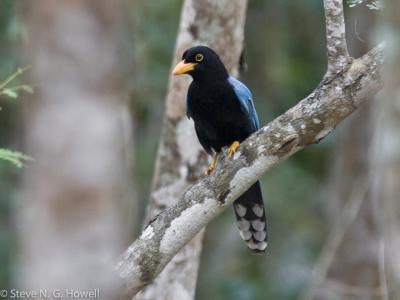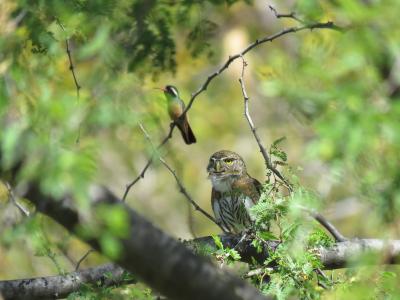Oregon: Birds and Theater
-
Jul 2028
Rich Hoyer
Tour Price to be Determined
Tour Price to be Determined
This tour is a marvelous mix of western North American birds combined with one of the West Coast’s top cultural attractions in a small and surprisingly civilized town. On four days, after a glorious morning of birding that includes Rich’s famously delicious picnic breakfasts and lunches in stunningly gorgeous surroundings of mountain meadows and coniferous forests, we’ll return in time for a daily performance in the theaters just four short blocks from our comfortable hotel. We’ll have the opportunity to see four of the year’s offerings, including at least one Shakespeare play. (We’ll update the offerings once OSF announces their 2025 schedule.)
First of all, it’s not just a festival and far more than just Shakespeare. The Oregon Shakespeare Festival began as a three-day event featuring two Shakespeare plays, but that was 85 years ago. Away from the Pacific Northwest it seems to be a closely-guarded secret, but the OSF has evolved to be one of North America’s premier acting companies. In recent years, over 800 performances during their eight-month season were viewed by 400,000 attendees. Now offering up to ten different plays over the season and occupying three stages, the Tony Award-winning OSF doesn’t have trouble selling out performances, especially during the summer, when nearly perfect weather occurs with almost alarming predictability.
The delightful setting of Ashland is often underappreciated by its loyal theatergoers, many of whom make an annual pilgrimage from throughout Oregon, Washington, and California to see all the plays in just a few days. It is located in a natural wonderland, hours from any metropolitan area and surrounded by rugged mountains, wild rivers, national forests, and wilderness areas, and it’s within driving distance of Oregon’s only national park (Crater Lake, which we visit), a national monument, and several national wildlife refuges. Despite this, Ashland is also a charming and surprisingly civilized small college town with many fine restaurants within walking distance of our hotel; we’ll sample a different one each night.
(This tour can be taken in conjunction with our tour Oregon in Summer.)
Day 1: Our tour begins with a transfer from the airport and then an introductory meeting at 5:30pm at our hotel in Ashland followed by a walk to dinner.
Days 2-4: Our first birding will likely be near Ashland in a valley surrounded by forested hills. The oak and madrone woodlands are home to the common California Scrub-Jay along with the more local California and Spotted Towhees, Oak Titmouse, White-breasted Nuthatch, and Acorn Woodpecker. Bushtit, Lesser Goldfinch, and Black-capped Chickadee are common garden birds in town, and even American Dipper can be found in the city park. As we wander farther from town, the back roads through mixed conifer forests are good for Mountain Quail, Sooty Grouse, and Northern Pygmy-Owl, three of the harder to locate western specialties. Options for other birding days might include Mt. Ashland, where wildflowers attract several kinds of butterflies and searching for Great Gray Owl, which breeds in all the surrounding mountains. If we have the energy, we can even spend a few post-theater minutes looking for Western Screech-Owl in the park behind the theaters or even driving farther for Flammulated or Northern Saw-whet Owl. We’ll be back each day for our scheduled 1:30 pm or 8:00 p.m. theater performance. Nights in Ashland.
Shows:
- 2 September, 1:30 pm, Julius Caesar
- 3 September, 1:30 pm, Shane
- 4 September, 1:30 pm, The Importance of Being Earnest
Day 5: We’ll take a break from the theater to travel a bit farther abroad into the Klamath Basin, famous for its teeming national wildlife refuges. Along our route are diverse coniferous forests where we should see Dusky Flycatcher, White-headed Woodpecker, Cassin’s Vireo, Pygmy Nuthatch, Mountain Chickadee, and Mountain Bluebird. We’ll then drive through the national wildlife refuges in search of Ruddy Duck, Western and Clark’s Grebes, American White Pelican, White-faced Ibis, and Tricolored Blackbird. Staying overnight far from civilization among pine forests and sedge meadows, we’ll enjoy a home-grilled dinner on the patio. Afterward we may take a short trip to look for owls or listen for Yellow Rail. Night in Fort Klamath.
Day 6: We’ll visit magnificent Crater Lake National Park this morning, checking the coniferous forests on the way up the mountain for Williamson’s Sapsucker and Cassin’s Finch. Birding above treeline at the lodge and the rim overlooking the crystal blue lake (the deepest in North America) could produce Clark’s Nutcracker, Canada Jay, and possibly Gray-crowned Rosy-Finch. It will be a memorable day in one of the most scenic national parks in the country. In the afternoon we’ll return to Ashland and the festival in time for our farewell dinner and attend a final evening performance. Night in Ashland.
Show:
- 6 September, 8:00 pm, Quixote Nuevo
Day 7: The tour ends this morning in Ashland
Note: The information presented here is an abbreviated version of our formal General Information for Tours to Oregon: Birds and the Shakespeare Festival. Its sole purpose is to give readers a sense of what might be involved if they took this tour. Although we do our best to make sure that what follows here is completely accurate, it should not be used as a replacement for the formal document which will be sent to all tour registrants, and whose contents supersedes any information contained here.
ENTERING THE UNITED STATES: Non-U.S. citizens will need a valid passport and may need a tourist visa. Consult your nearest U.S. Embassy or consulate for details. Canadian citizens should carry proof of citizenship in the form of a passport or birth certificate.
PACE OF THE TOUR: Most mornings will start around 6:00 a.m.; a few may begin earlier, others later. On most days we finish birding before returning to the hotel in time for lunch at a local restaurant and the afternoon play. A short afternoon walk to the nearby park may be offered on one day, and optional owling will be offered on a night or two after dinner. On our two days to the Klamath Basin and Crater Lake we have longer days in the field, returning to the hotel by about 4:00 p.m. with an hour or so off before dinner and a late evening play on the return day.
The walk from the hotel to the theater complex is four blocks on sidewalks. Some of the walks to dining are up to 10 blocks.
There are no particularly long or strenuous walks, the longest being no more than a mile. Most walking is done on roads and level trails, although there will be some over uneven ground and possibly in marshy/dewy grass. When looking for Great Gray Owl, we may have to walk through a forest up a slope with much fallen wood, requiring good balance and agility. One can opt to stay on the road near the van during this short walk if it is too difficult. Having sturdy footgear, waterproof if possible, is important, and a walking stick is recommended for anyone with balance problems or weak knees.
HEALTH: Oregon presents no real hazards to the visiting birdwatcher.
Insects: We will be in Oregon largely after the mosquito season. The leader will have enough repellent for all if it seems necessary.
Elevation: Some of our birding is at elevations of 6000 to 7500 feet, and while we do not schedule anything even faintly strenuous at these elevations, anyone with a history of cardiovascular or respiratory problems should be aware of the altitudinal stress. Please consult your physician.
Smoking: Smoking is prohibited in the vehicles or when the group is gathered for meals, checklists, etc. If you are sharing a room with a nonsmoker, please do not smoke in the room. If you smoke in the field, do so well away and downwind from the group. If any location where the group is gathered has a stricter policy than the WINGS policy, that stricter policy will prevail.
Miscellaneous: We actively look for reptiles, but the one species of poisonous snake in Oregon is very seldom seen this early in the year. High-elevation sun can be intense, making a broad-brimmed hat, proper clothing and a strong sun block lotion essential.
CLIMATE: It could be cool in the early mornings in the mountains and hot down in the valley: we may experience temperatures ranging from 40° to over 100°F, with averages ranging 55° to 85°F. Rain is unlikely at this time of year. As noted above, high-elevation sun can be intense, making a broad-brimmed hat, proper clothing and a strong sun block lotion essential. More of an issue in recent years is the possibility of smoke from forest fires, which is highly variable from year to year depending on the location of the fires and the weather pattern. Persistent, dense smoke may result in cancelation of plays in the outdoor Allen Elizabethan Theater, in which case we will try to get tickets to an alternate, indoor performance.
ACCOMMODATIONS: We will stay at a standard, comfortable motel while in Ashland; our cabins for the one night at Fort Klamath are nice and clean, but simpler, tending towards rustic.
Internet: Wireless internet will be available at both hotels.
FOOD: Food is North American standard but Ashland has some nice restaurants, and fresh fruit and produce are everywhere available. At Fort Klamath we will have a fresh grilled dinner prepared by your leader. There will be plenty of fresh fruit and vegetables, mostly organic, at our picnic meals.
WINGS tours are all-inclusive and no refunds can be issued for missed tour meals.
Food Allergies / Requirements: We cannot guarantee that all food allergies can be accommodated at every destination. Participants with significant food allergies or special dietary requirements should bring appropriate foods with them for those times when their needs cannot be met. Announced meal times are always approximate depending on how the day unfolds. Participants who need to eat according to a fixed schedule should bring supplemental food. Please contact the WINGS office if you have any questions.
Water: Tap water is potable throughout. Fresh water will be available in the van throughout the tour, usually in one-gallon containers. It is suggested you bring your own personal water container so as to have a continuous supply of water in order to stay hydrated at all times.
TRANSPORTATION: We will be traveling by 15- (or 12-) passenger window van or minivan, depending on the group size. When using 15-passenger window vans, we take a maximum of seven passengers plus the leader. Some roads may be quite bumpy and/or winding; anyone susceptible to motion sickness should bring an appropriate remedy. Participants should be able to ride in any seat in tour vehicles and are expected to change seats with others daily.
PHOTOGRAPHY: Scenery and memory shots will be plentiful and simple to obtain, but birds are difficult to photograph. Although there will be occasions when bird photography is possible, a birdwatching tour is not normally the best means of pursuing this aim, as excellent views of birds and further needs of the group don’t necessarily translate to the time needed for that perfect shot. Digiscoping, on the other hand, is perfectly compatible with the tour, though you must bring your own telescope; the leader’s scope will not be available for this purpose. Bring as many memory cards as you think you will use, as it may be difficult to find precisely what you need on short notice. Camera equipment should be packed in moisture- and dust-proof bags as a precaution.
EBIRD: eBird is a popular record-keeping tool used by a steadily increasing number of birders to track bird sightings by location, day, time, city, county, state/province, and/or country. It is up to the individual tour leader to determine how eBird will be managed while on tour. Some WINGS tour leaders use eBird regularly while on tour and others do not. Keep in mind that if a leader does keep eBird lists, they will share them with you. If this is the case, do not keep separate eBird lists during the tour; the leader knows the best eBird protocols and locations, and you can edit your checklists to remove any species you miss once they are shared. Please give the leader a few weeks after a tour to share the lists with you, though some leaders manage to do this daily. If you are with a leader who does not use eBird, please note that the WINGS office will upload a final cumulative list to eBird for each tour. It will typically be listed on one day of the tour and at the country or regional level, which is sufficient for at least adding the birds to your life list totals. Please request this checklist from the WINGS office after your tour.
2025 Narrative
Brief Summary
The Oregon Birds & Theater tour was an immensely enjoyable mix of great birds and fabulous theater – with absolutely perfect weather, very little smoke, and several delicious picnic meals in gorgeous settings. The first day's very early start of 5:20 sounded extreme, though it was easy for those coming from the Eastern time zones and was deemed worth it by all when we found a Great Gray Owl. The rest of that first morning was spectacular with Sandhill Cranes, followed by Mountain Quail and many other woodland birds. Other bird highlights on our birding based out of Ashland included White-headed Woodpecker, MacGillivray's Warbler, Green-tailed Towhee, and Western Screech-Owl, the latter just a couple minutes from our hotel. The side trip to the Klamath Basin was amazing for the number of water birds such as White-faced Ibis and the local Tricolored Blackbird, while the views of Crater Lake were spectacular, where we saw our only Clark's Nutcracker. The quality of the theater performances was top notch, with most participants voting for either Shane or Quixote Nuevo as their favorite, though the Julius Caesar and Importance of Being Earnest were also excellent productions as well. For such a short tour with just a few hours of birding each day, it was a very full experience for the wonderful group of participants.
Detailed Summary
The gasps at the announcement our 5:20 a.m. departure were audible, but even moreso were the gasps when we pulled up to a lovely meadow at dawn to see a Great Gray Owl perched on the vertical branches of an old, fallen pine tree. We got out and watched this amazing creature through the spotting scope for nearly a quarter hour as it flew down into the meadow grass several times, at least once catching a mouse. Everyone agreed it was worth the loss of a little sleep. Later, it was magical to hear the bugling of Sandhill Cranes while we had breakfast in the pine trees surrounded by mountain meadows. There were many juncos, various sparrows, and even a few warblers moving through the willows and into the meadow, but it was a Vesper Sparrow perched on a footbridge railing that gave us the most memorable views. When we departed there, we spotted the Sandhill Cranes lounging nonchalantly right by the road. We then drove a side road where we lucked into a few Mountain Quail feeding at the far end of a big gravel pullout. We made a couple stops seeing our first mixed flocks with Mountain Chickadees and Red-breasted Nuthatches, and one group had both Spotted and Green-tailed Towhees. The afternoon Julius Caesar production was excellent, though it's not the easiest of Shakespeare's works to get into right away. The message of the ramifications of political violence were clear though, just as relevant today as five centuries ago.
Our second day highlighted the birds of the oak and riparian woods of the Rogue River valley north of Ashland. We first marveled at an Acorn Woodpecker granary tree, riddled with thousands of acorns, and then we marveled at how many woodpeckers there were in the area. The Acorn Woodpeckers were numerous, but we also saw a Downy Woodpecker and noticed that many Lewis's Woodpeckers were migrating overhead. A group of passerine migrants in the trees included a Black-throated Gray Warbler and a few Western Tanagers, while a short walk down the trail produced the local resident Wrentit and California Towhee. We visited a reservoir that had several Baird's Sandpipers on the shore and and Oak Titmouse in the oaks.
After a very enjoyable production of Shane, which added some characters and twists from the old movie version, the diehards visited Lithia Park just a few blocks from our hotel and easily found a responsive Western Screech-Owl.
Our third day of birding saw us back in the mountains, this time to Mt Ashland just south of town. One of our main targets was White-headed Woodpecker which did prove to be present, along with a surprising number of Townsend's Solitaires. Mixed in with the multitudes of Mountain Chickadees and Red-breasted Nuthatches we spied a migrant Hermit Warbler, while the thickets below the road had the locally breeding Green-tailed Towhee and MacGillivray's Warbler as well as a very early migrant "Sooty" Fox Sparrow. At the top of the peak were migrant Western Wood-Pewees as well as Yellow Pine Chipmunk and Golden-mantled Ground-Squirrels side-by-side for good comparison. On our way down the mountain, we had to stop again at the campground for a group of Canada Jays which had been mysteriously absent during breakfast. We made a short stop at Emigrant Lake where a few Lark Sparrows flushed off the road and a group of Caspian Terns made it on our list. The afternoon show of The Importance of Being Earnest was good for laughs, but the humor was certainly a matter of taste and often too fast to keep up with.
Our day free of theater took us east of the mountains and to the little hamlet of Fort Klamath, starting with picnic breakfast and then some nearby birding where we finally nabbed a Northern Pygmy-Owl, now seen six out six tours here. A scenic drive on some back roads didn't result in a hoped-for grouse of any kind, but Golden-crowned Kinglet and Chestnut-backed Chickadees, as well as a stop for some delicious blackberries (an interesting new local record for the introduced European Blackberry) made it worthwhile. Once on the drier side of the mountains we spied a few Black-billed Magpies and at our first stop lucked into a post-breeding group of the very local Tricolored Blackbird that were vocalizing, despite being in confusing plumages. Another stop at a small marsh was overwhelming with its numbers of birds.
There were plenty of Black-necked Stilts and White-faced Ibises to keep us busy, not to mention the uncountable numbers of Long-billed Dowitchers and drab-plumaged ducks. Driving through irrigated farmland netted us a fine Ferruginous Hawk, a write-in on our master list. After lunch at the national wildlife refuge, we had the fortune of seeing Rock Wren and Canyon Wren perched on the same boulder at the same time. Driving the route through the refuge impoundments was productive for grebes, giving us great comparison of Clark's and Western, the latter with a chick on its back on this late date. We finished a fine day with a grilled dinner of fajitas and vegetables and local wines at our idyllic lodging, followed by a memorable homemade chocolate mousse.
A beautiful early morning picnic breakfast at our lodge was followed by a drive though marshy cattle country where Brewer's Blackbirds and Savannah Sparrows dominated the fences, except the point where two immature Bald Eagles perched close to the road instead. A mixed flock nearby had our best view of Cassin's Vireo, and before we headed into the pine forest Mountain Bluebird graced the meadows. At the stunningly beautiful Crater Lake we had to contend with a hugely popular bicycling event, for the first time happening over two weekends instead of just the following weekend as in the past. We still found a few Cassin's Finches and by luck just one Clark's Nutcracker that was worth turning around for. Our picnic lunch was accompanied by the usual fearless Canada Jays and a few more wary Steller's Jays. Two last birding stops near Upper Klamath Lake were good for Hermit Warbler and Nashville Warbler, both uncommon migrants this late. We arrived in time for a wonderful farewell dinner at yet another amazing restaurant followed by Quixote Nuevo, a thought-provoking and moving play that was thought by some to be the best of the tour.
- Rich Hoyer, 2025
Rich is extremely knowledgeable and is eager to teach. I learned a lot during the trip. He is so excited about the birds, animals, insects, plants, geology and general environment, and all the local microclimates we visited. He truly loves the outdoors and it shows. He is very attentive to detail, is clear on his instructions and expectations...Rich's picnics were very satisfying and there was good attention to the dietary needs of the whole group.
- Carol H. on Oregon: Birds and Theater
Maximum group size eight with one leader






























